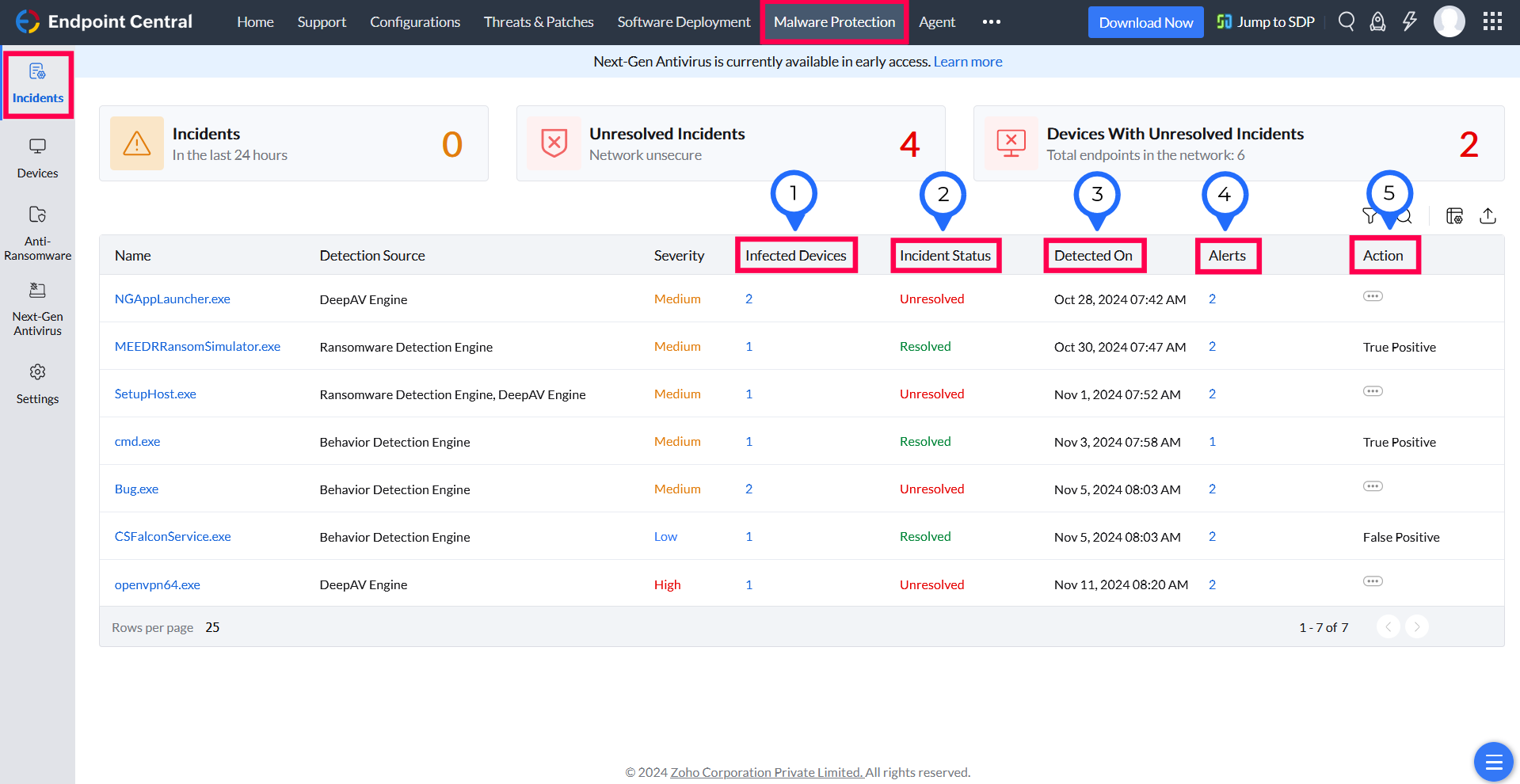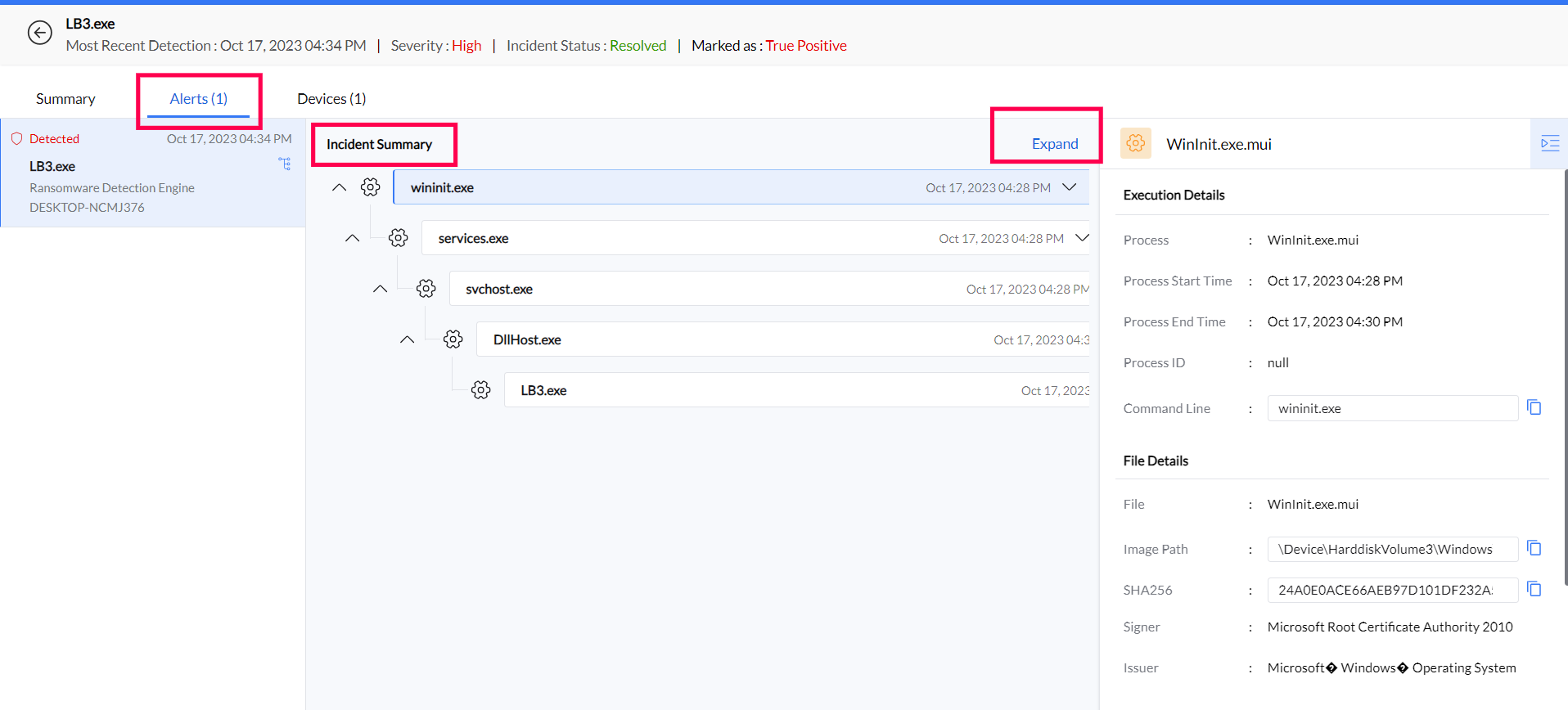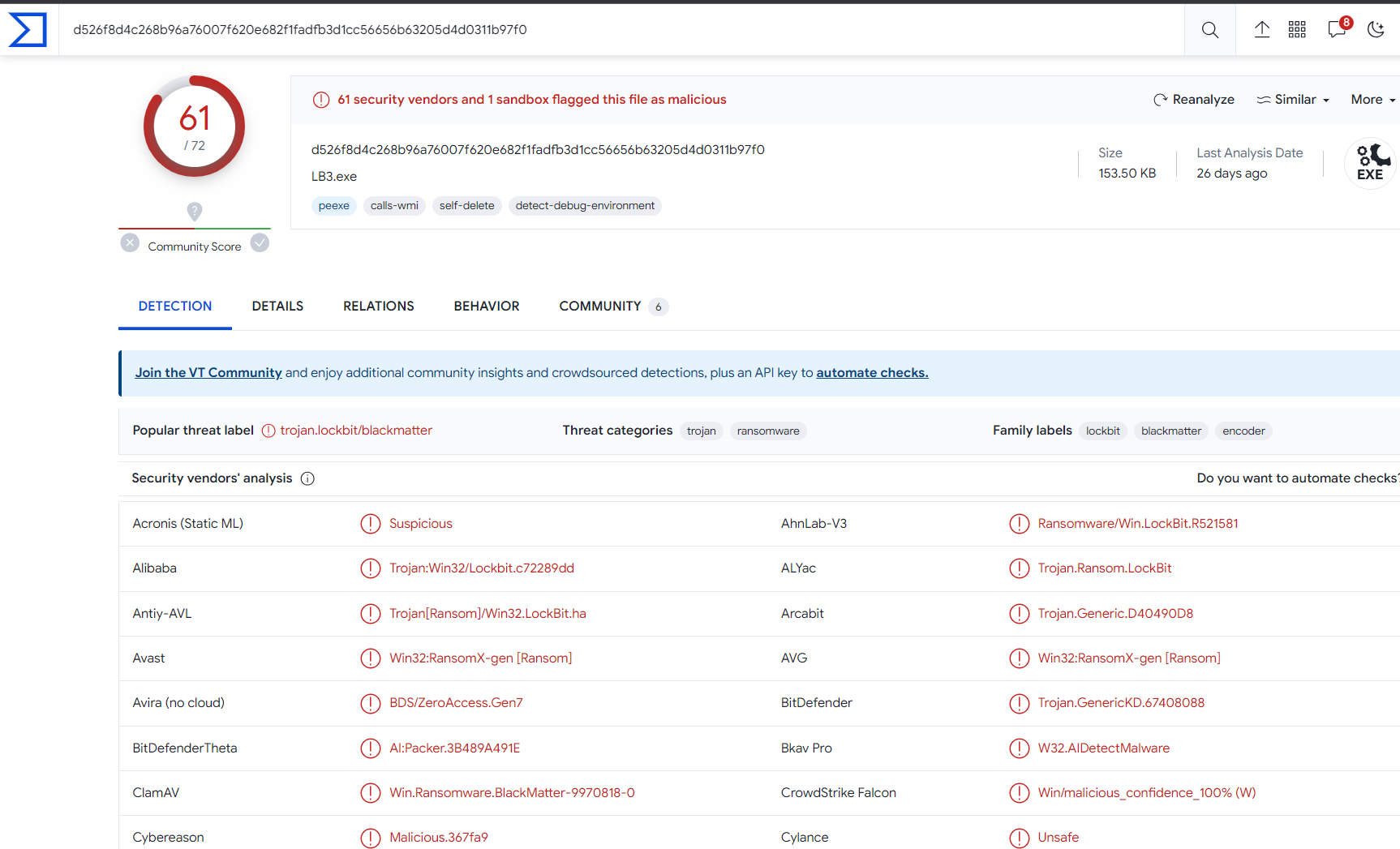

This document provides a structured approach for analyzing and responding to a suspected ransomware intrusion using Endpoint Central's Anti-Ransomware feature. Swift and accurate analysis is crucial to identify the true nature of an intrusion and to mitigate risks effectively.
Endpoint Central's Ransomware detection engine has identified anomalous activity. It's essential to validate the intrusion before classification of the breach.
Utilize the Anti-Ransomware tab for key information :

Click the incident and access the Summary section to view crucial incident details.

For the first level of analysis:
| Parameter | Detected Incident | Prevented Incident | Blocked Intrusion |
|---|---|---|---|
| Initial Status | Incident has been detected. | Incident has been successfully prevented. | Attempted intrusion has been blocked. |
| Urgency | Urgent attention is needed. | No immediate urgency, as the incident has been prevented. | Urgent attention may be needed, but the intrusion is blocked. |
| User Action Required | Investigate and label the intrusion as true/false positive. | Further analysis can be performed to enhance security. | Immediate user action may be required, as the intrusion is blocked. |
| Proactive Measures | Investigate and label the intrusion to ensure system security. | Enhance security measures based on additional analysis. | Prevent and block the intrusion, ensuring network stability. |
| Follow-up Action | Modify configurations to enable prevention/blocking in future incidents. | Investigate additional details to enhance security measures. | Monitor for any potential future incidents. |
| File Modifications | Restore the device to its pre-malware state if file modifications occurred. | None required | Restore the device to its pre-malware state if file modifications occurred. |
| System Stability | Potential impact on system integrity and security. | System security and stability are ensured. | System integrity and security are maintained. |

Gain granular insights by examining the process source, child processes, and command-line tools. Clicking a child process provides detailed information, including SHA value, image path, and command line details.
VirusTotal verification (true positive)

VirusTotal verification ( unclear / no results )
Clicking VirusTotal may sometimes provide unclear or no results . In such cases, further investigation is required.